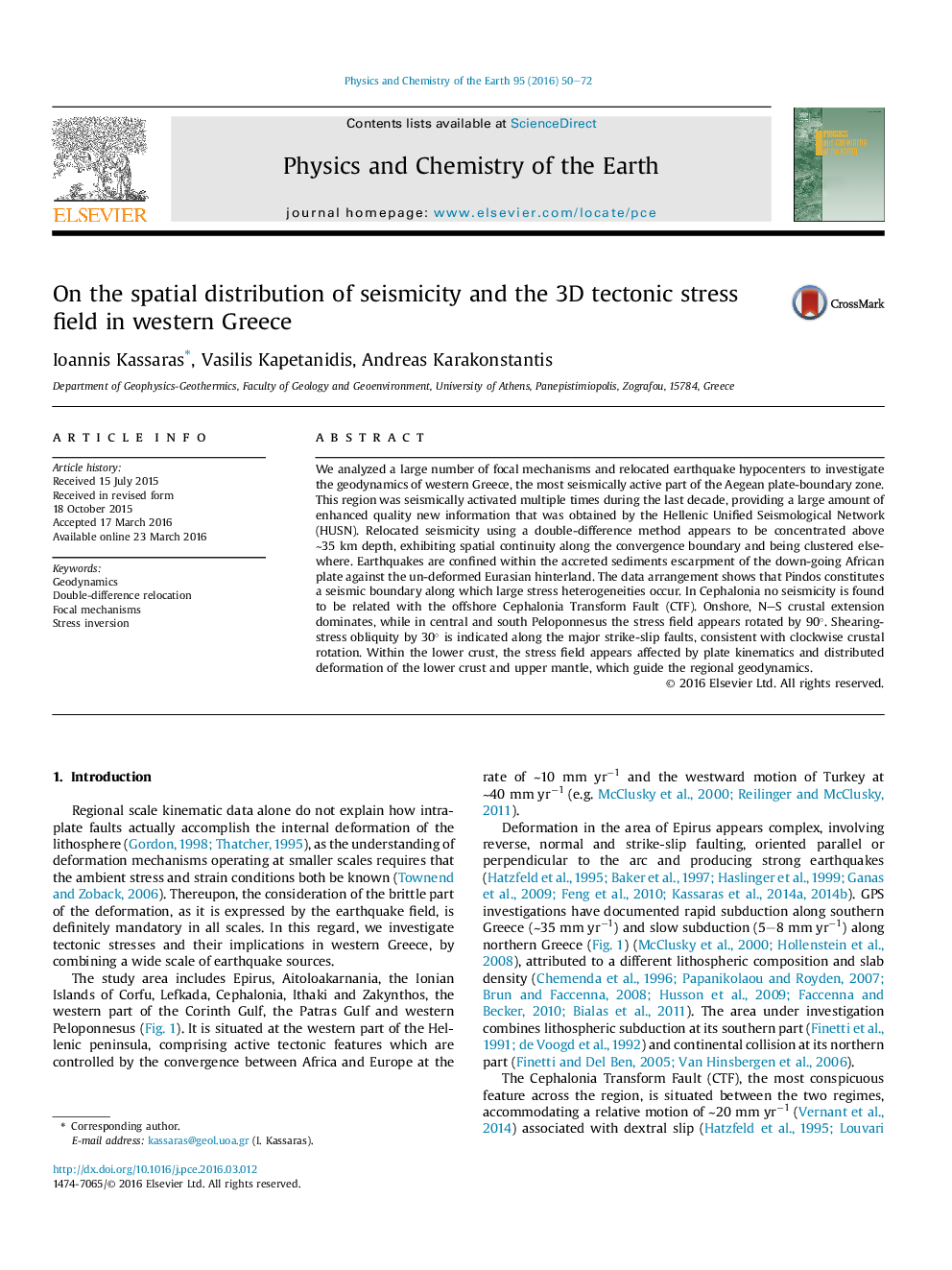| Article ID | Journal | Published Year | Pages | File Type |
|---|---|---|---|---|
| 4720788 | Physics and Chemistry of the Earth, Parts A/B/C | 2016 | 23 Pages |
•The geodynamics of the Africa – western Aegean convergence zone is investigated.•A new compilation of focal mechanisms has been made.•3D stress tensor inversion allowed for insights on the strain variation at depth.•Possible interactions between upper mantle flow and lower crust are hinted.
We analyzed a large number of focal mechanisms and relocated earthquake hypocenters to investigate the geodynamics of western Greece, the most seismically active part of the Aegean plate-boundary zone. This region was seismically activated multiple times during the last decade, providing a large amount of enhanced quality new information that was obtained by the Hellenic Unified Seismological Network (HUSN). Relocated seismicity using a double-difference method appears to be concentrated above ∼35 km depth, exhibiting spatial continuity along the convergence boundary and being clustered elsewhere. Earthquakes are confined within the accreted sediments escarpment of the down-going African plate against the un-deformed Eurasian hinterland. The data arrangement shows that Pindos constitutes a seismic boundary along which large stress heterogeneities occur. In Cephalonia no seismicity is found to be related with the offshore Cephalonia Transform Fault (CTF). Onshore, NS crustal extension dominates, while in central and south Peloponnesus the stress field appears rotated by 90°. Shearing-stress obliquity by 30° is indicated along the major strike-slip faults, consistent with clockwise crustal rotation. Within the lower crust, the stress field appears affected by plate kinematics and distributed deformation of the lower crust and upper mantle, which guide the regional geodynamics.
